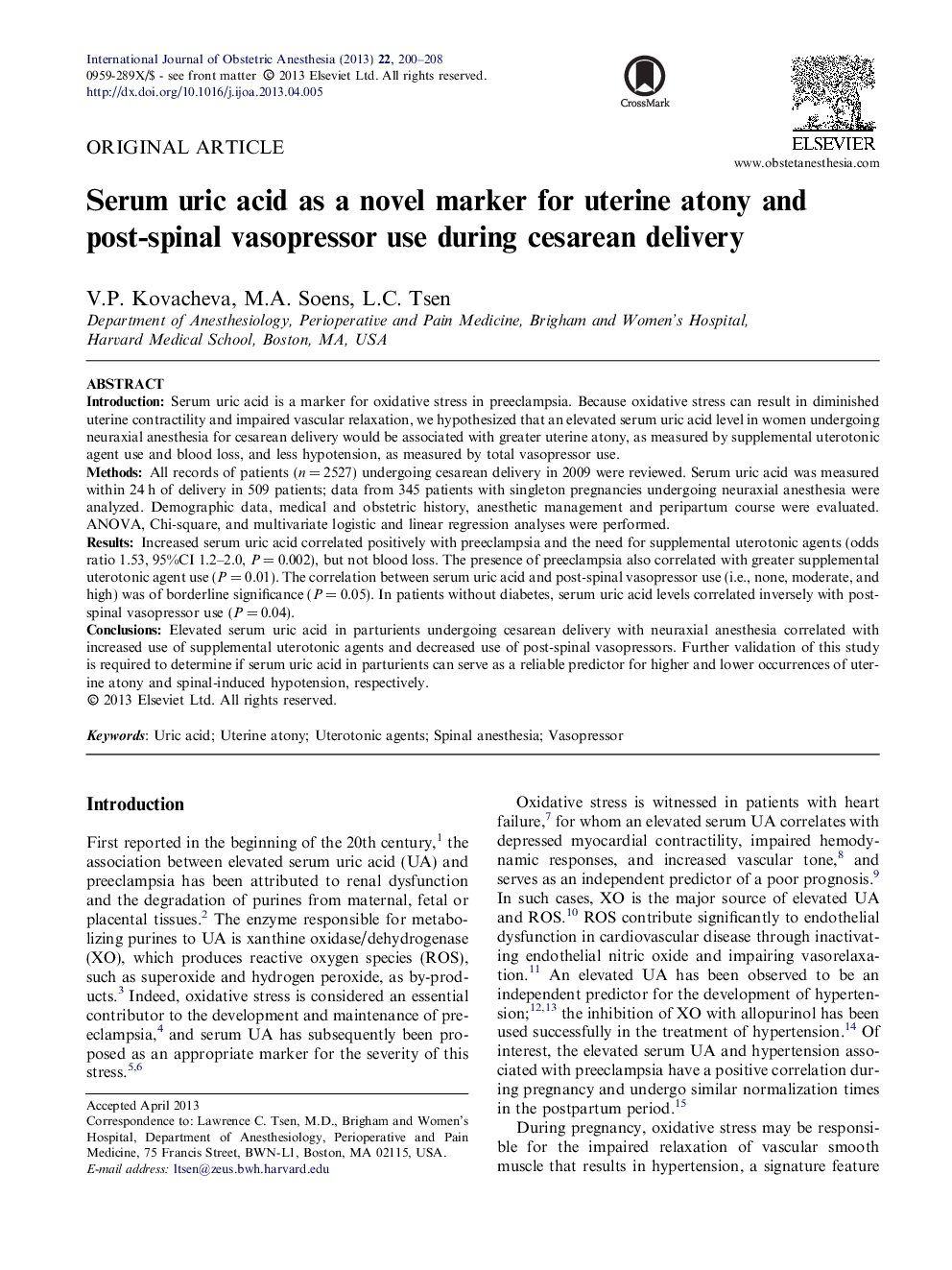| کد مقاله | کد نشریه | سال انتشار | مقاله انگلیسی | نسخه تمام متن |
|---|---|---|---|---|
| 2757632 | 1567523 | 2013 | 9 صفحه PDF | دانلود رایگان |

IntroductionSerum uric acid is a marker for oxidative stress in preeclampsia. Because oxidative stress can result in diminished uterine contractility and impaired vascular relaxation, we hypothesized that an elevated serum uric acid level in women undergoing neuraxial anesthesia for cesarean delivery would be associated with greater uterine atony, as measured by supplemental uterotonic agent use and blood loss, and less hypotension, as measured by total vasopressor use.MethodsAll records of patients (n = 2527) undergoing cesarean delivery in 2009 were reviewed. Serum uric acid was measured within 24 h of delivery in 509 patients; data from 345 patients with singleton pregnancies undergoing neuraxial anesthesia were analyzed. Demographic data, medical and obstetric history, anesthetic management and peripartum course were evaluated. ANOVA, Chi-square, and multivariate logistic and linear regression analyses were performed.ResultsIncreased serum uric acid correlated positively with preeclampsia and the need for supplemental uterotonic agents (odds ratio 1.53, 95%CI 1.2–2.0, P = 0.002), but not blood loss. The presence of preeclampsia also correlated with greater supplemental uterotonic agent use (P = 0.01). The correlation between serum uric acid and post-spinal vasopressor use (i.e., none, moderate, and high) was of borderline significance (P = 0.05). In patients without diabetes, serum uric acid levels correlated inversely with post-spinal vasopressor use (P = 0.04).ConclusionsElevated serum uric acid in parturients undergoing cesarean delivery with neuraxial anesthesia correlated with increased use of supplemental uterotonic agents and decreased use of post-spinal vasopressors. Further validation of this study is required to determine if serum uric acid in parturients can serve as a reliable predictor for higher and lower occurrences of uterine atony and spinal-induced hypotension, respectively.
Journal: International Journal of Obstetric Anesthesia - Volume 22, Issue 3, July 2013, Pages 200–208